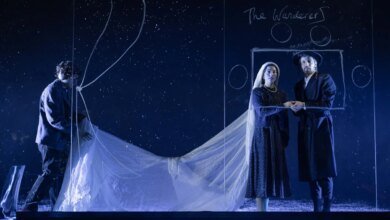

To the end, Auerbach spoke and wrote very little about his profound experience of dislocation and loss. In his own words: “I think I did this thing, which psychiatrists frown on: I am in total denial. It’s worked very well for me.” Nevertheless, several commentators on his work have chosen to interpret his obsession in the immediate post-war era with images of construction sites – emblematic of the rebuilding of London after the destruction wrought by the Blitz – as an oblique response to the need to rebuild his own life in that period.
His gradual move from a sombre, almost muddy palette (also due, it must be said, to financial constraints) to a more colourful and life-affirming one could also be construed as a move away from a psychological darkness into the light. Similarly, his reclusiveness, his choice of a working method that involved almost endless reworking, and his tendency to focus on a very limited number of geographical locations, motifs and sitters, could be seen, in part at least, as a legacy of early trauma. Indeed, the poet Stephen Spender (himself partly of European Jewish origin) once commented that all Auerbach’s sitters seem “burdened with perhaps terrible experience…like refugees conscious of concentration camps”.
However much the artist himself would have baulked at such interpretations of his work, the fact remains that with his passing, that remarkably creative generation of European, mostly Jewish refugees seems truly on the cusp of disappearing. Yet Auerbach’s work remains visible in numerous public collections; while in the wake of his death, the outpouring of tributes to him testifies to the admiration with which he is regarded outside the Jewish world, in the UK and far beyond.
By Monica Bohm-Duchen
Header image: cross section of Head of JYM ll by Frank Auerbach, 1984-85
Source link




